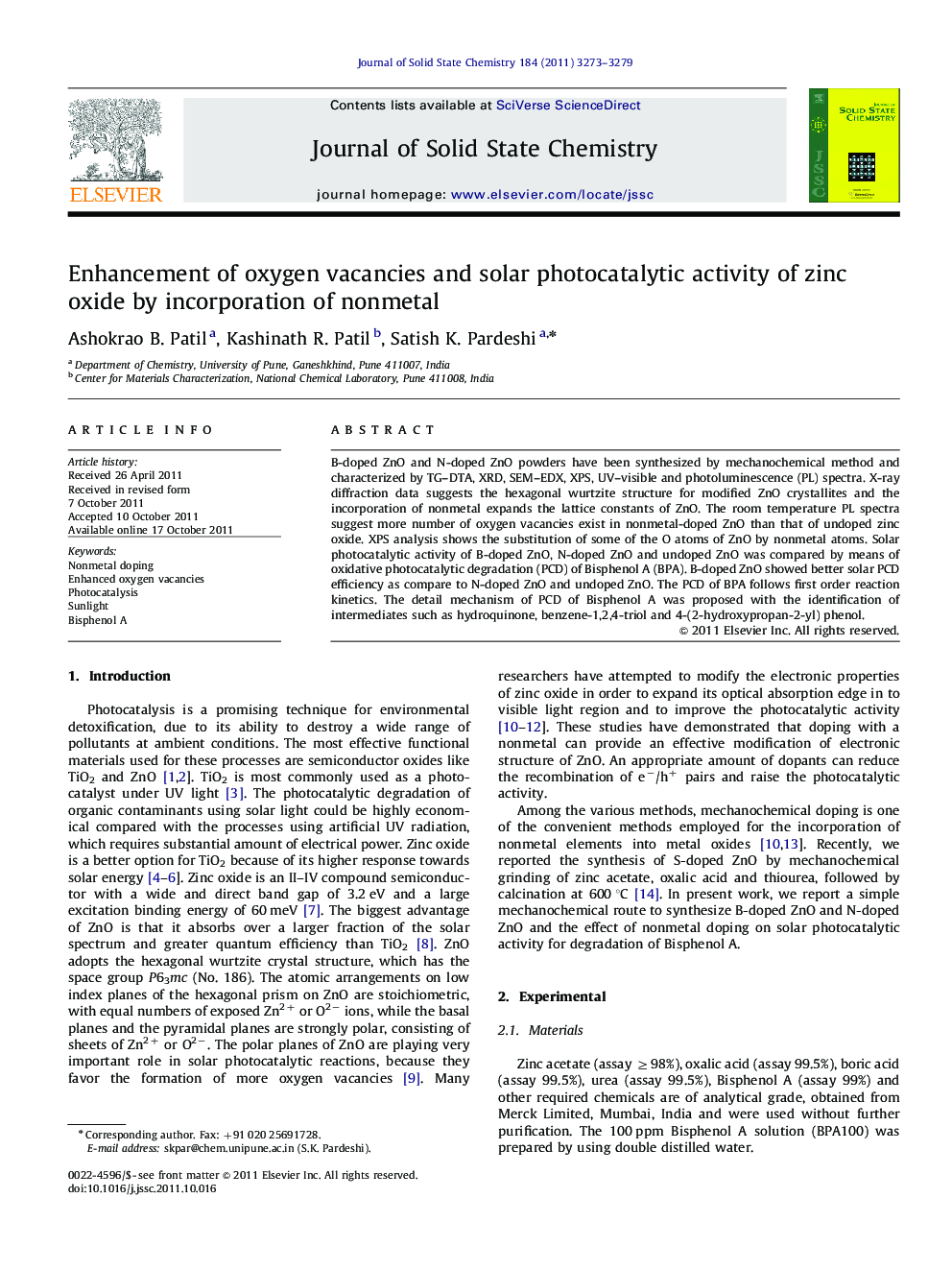| Article ID | Journal | Published Year | Pages | File Type |
|---|---|---|---|---|
| 1330538 | Journal of Solid State Chemistry | 2011 | 7 Pages |
B-doped ZnO and N-doped ZnO powders have been synthesized by mechanochemical method and characterized by TG–DTA, XRD, SEM–EDX, XPS, UV–visible and photoluminescence (PL) spectra. X-ray diffraction data suggests the hexagonal wurtzite structure for modified ZnO crystallites and the incorporation of nonmetal expands the lattice constants of ZnO. The room temperature PL spectra suggest more number of oxygen vacancies exist in nonmetal-doped ZnO than that of undoped zinc oxide. XPS analysis shows the substitution of some of the O atoms of ZnO by nonmetal atoms. Solar photocatalytic activity of B-doped ZnO, N-doped ZnO and undoped ZnO was compared by means of oxidative photocatalytic degradation (PCD) of Bisphenol A (BPA). B-doped ZnO showed better solar PCD efficiency as compare to N-doped ZnO and undoped ZnO. The PCD of BPA follows first order reaction kinetics. The detail mechanism of PCD of Bisphenol A was proposed with the identification of intermediates such as hydroquinone, benzene-1,2,4-triol and 4-(2-hydroxypropan-2-yl) phenol.
Graphical AbstractB-doped ZnO and N-doped ZnO synthesized by mechanochemical method were characterized by various techniques. Solar photocatalytic degradation of Bisphenol-A is in the order of B-ZnO>N-ZnO>ZnO.Figure optionsDownload full-size imageDownload as PowerPoint slideHighlights► B-doped ZnO and N-doped ZnO powders have been synthesized by mechanochemical method. ► PL spectra suggest oxygen vacancies are in order of B-doped ZnO>N-doped ZnO>ZnO. ► Solar PCD efficiency is in order of B-doped ZnO>N-doped ZnO>ZnO for Bisphenol A.
